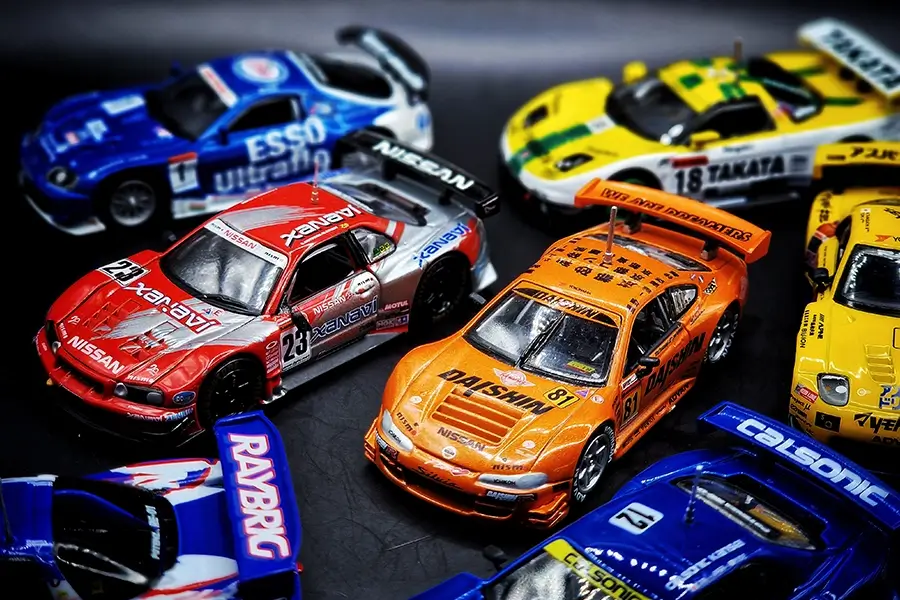
The legacy of JGTC Super GT – TAMIYA COLLECTION FEATURETTE
Motorsport in the Land of the Rising Sun - The history of the JGTC Super GT and its models:
Unlike many other racing series around the world, the Japanese Super GT series had not one, but two predecessors. To get back to the roots of the series, you have to look way back. The Japanese Touring Car Championship (JTCC) has been held in Japan since the late 1960s and was initially largely dominated by the first generation of the Nissan Skyline GT-R. When the FIA launched Group 5, this change also left its mark on the Land of the Rising Sun in the second half of the seventies: In 1979, the series was renamed ‘Super Silhouettes’ and subsequently contested according to these regulations. We know the Super Silhouette today through the Libertywalk widebody models better than ever.
The tuning company from Japan offers homages to the Super Silhouette series with its ultra wide body kits and designs. We have explained the Libertywalk cult in detail in a separate article by the way, so feel free to check it out on our website as well. The best-known Super Silhouette model by far is probably the Nissan Skyline RS Super Silhouette KDR30 from 1983. The red and black racing car was realised as a 1:64 scale model by Hot Wheels and Tomica in case you are interested to get a modelcar of this legend. And yes...There is also an interesting article about the Super Silhouette on our website.
The Group 5 regulations had already come into force in 1966 and stipulated the use of heavily modified special touring cars, which had to be produced in a small series (initially 50, later 25) and were not allowed to exceed five litres of engine capacity. After the rules were also applied to sports cars at the start of the 1970 season, vehicles such as the Porsche 917 or the Ferrari 512 dominated at will. The regulations had not originally been designed for such vehicles, but in Zuffenhausen (Porsche) and Maranello (Ferrari) they always knew how to get the best out of the rule books. After the technical specifications had been changed twice in quick succession, they finally ended up with the vehicle class that also competed in Japan: From 1976, homologated vehicles in Groups 1 to 4 were able to compete in the one-make world championship in a heavily modified form. Only the roof, bonnet and doors had to be derived from the production vehicle. The races were held as part of the ‘Fuji Grand Champion Series’, a kind of Japanese Can-Am series in which mainly single-seater sports cars competed. Even when Group 5 was buried in the one-make world championship in 1982 in favour of Group B, it still enjoyed great popularity in Japan.
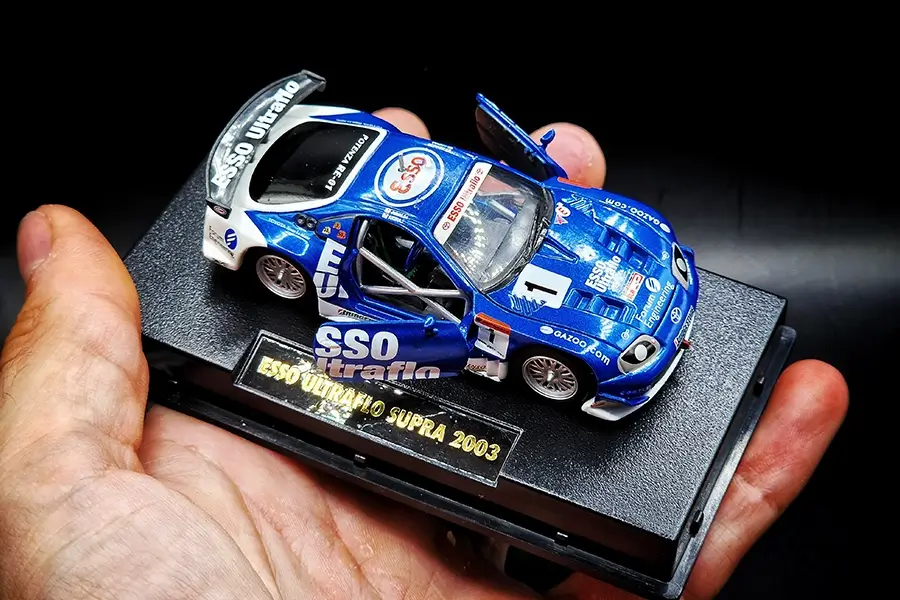
The birth of the JGTC and the battle against Porsche
However, the All Japan Sports Prototype Championship was discontinued in 1993 and replaced by its direct predecessor: the Japanese Grand Touring Championship (JGTC). In the meantime, the Japanese Touring Car Championship had also made another attempt to revitalise the previously vibrant Japanese touring car scene with Group A cars like those that competed in the original DTM. However, all attempts failed, so the objective for the JGTC was clear: They had to stop the ever-increasing budgets and a dominance like Porsche had had in the All Japan Sports Prototype Championship. Due to exploding costs, more and more manufacturers had to end their involvement. The end was imminent. Strict limits on vehicle performance and high additional weights for winning cars were able to stop the spiralling costs in their tracks.
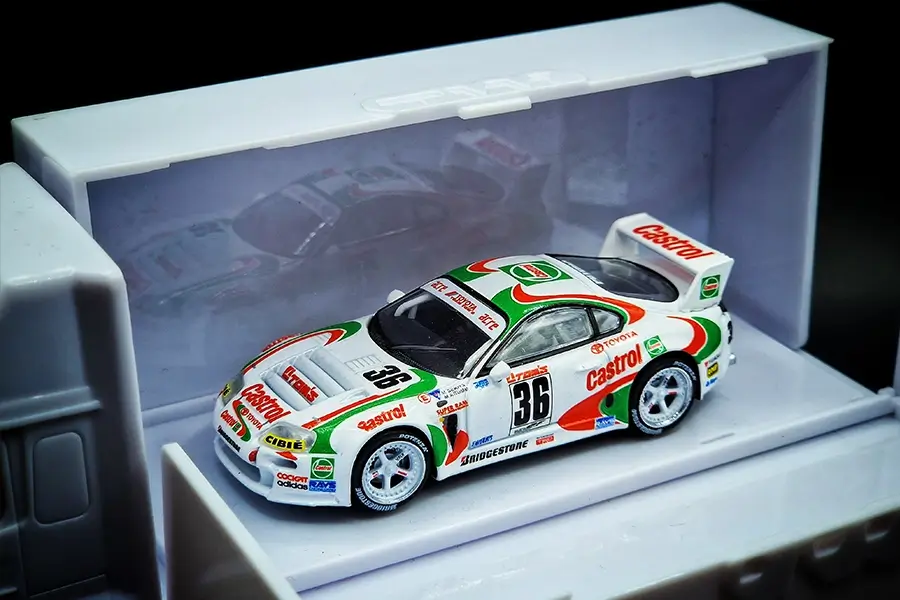
After the first starting fields at the beginning of the 1993 season still consisted largely of modified Japanese sports saloons and American or European imports, the first Japanese car built in accordance with the new regulations was soon on show: the Nissan Skyline GT-R R32. The difference to the many other national racing series of the 1990s was the simple fact that almost any vehicle was permitted in Japan: In 1994, for example, Japanese racing cars from the previous season of the JGTC dueled with vehicles from the American counterpart IMSA GTS and modified relics from Group C. It would be hard to find a greater variety of different concepts. Tarmacworks showed us an absolutely legendary car with the 1995 Castrol Tom's Supra, which tried to snatch away podium places against the incredibly dominant Nissan Skyline GTR R32 and R33.
The following year, 1996, also went down in the history books of the JGTC, where Team Lark had learnt to fear the Japanese with two McLaren F1 GTRs. Neither Nissan with their Skylines nor Toyota with their V8-converted MK4 Supra models were able to assert themselves against the concentrated V12 power of the McLaren. The model was produced by Kyosho, but without the LARK sponsor. As quickly as McLaren had joined, they left Japan again due to regulation changes.
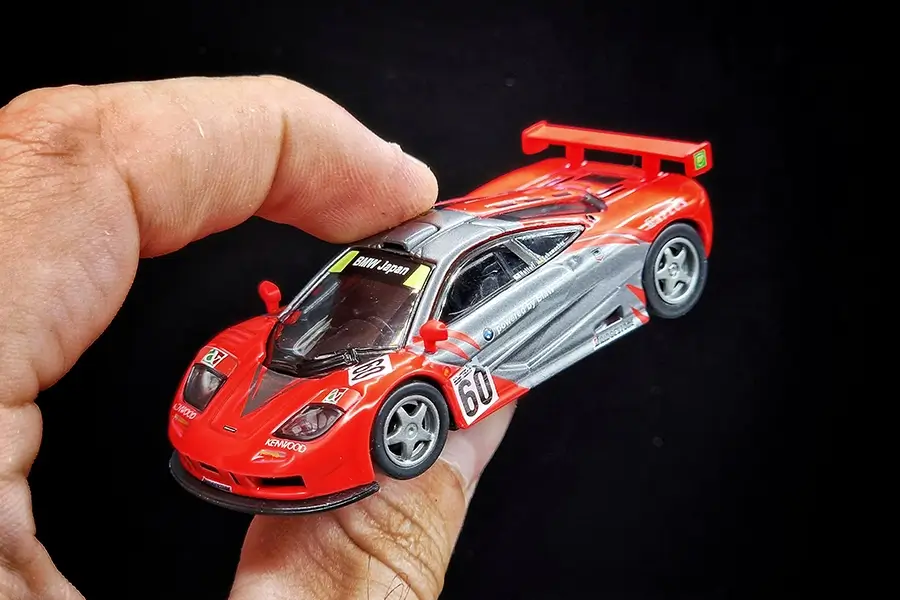
From JGTC to Super GT
In the following years, the JGTC exported to other Asian countries and races were established in Malaysia and China. Show races were also held in America, but these races were not included in the regular season calendar. Further expansion plans had to be abandoned, not least due to the fact that a national championship is defined by the FIA as a series that competes on a maximum of three continents. In order not to obstruct the path to a global future, the series was therefore renamed ‘Super GT’ on 10 December 2004 and henceforth regarded as an international racing series.
Tamiya Collectors Club JGTC 2003
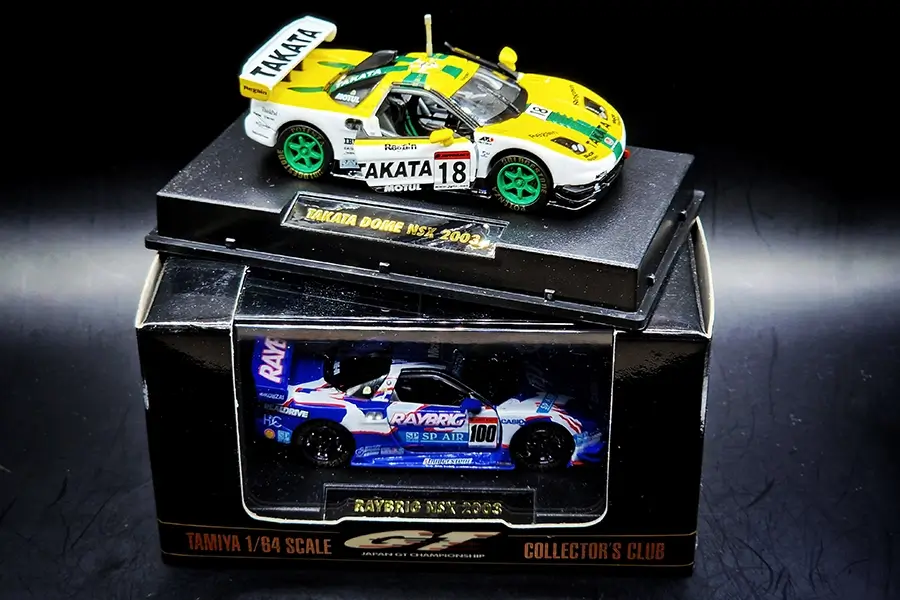
Perhaps a coincidence or not, the manufacturer Tamiya, which is actually known for modelling and RC vehicles, has released a very special series called the Japan GT Championship Collector's Club Series. The production year 2004 and 2005 can be seen on the back of the packaging, but the focus of the whole series is on the very last official JGTC season 2003, before the name change took place. The 2003 season is so exciting because we see a line-up of GT500 and GT300 cars that is peppered with numerous car brands. For example, Nissan was with their Skyline as XANAVI Nismo, Calsonic (both R34 Skyline) but also as Nissan Silvia S15 under Team Dajshin.
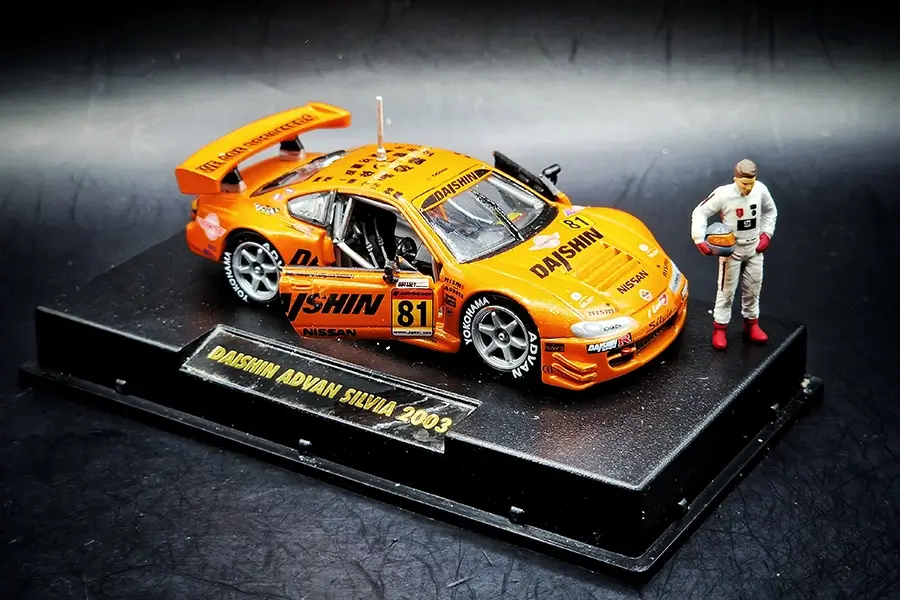
Even better that Tamiya has secured models from the GT500 Series (more powerful vehicles) and GT300 to release them 1:1 with all the important sponsors. Toyota is also represented with its Supra MK4 as well as the Celica and MR-S. Honda was at the start with the NSX and, thanks to the DOME RACING TEAM in yellow, white and green, was also quite successful with 3rd place in the overall standings. Madzda also took part with the RX7 as a GT300 vehicle in twelfth place. The overall winner in the smaller GT300 class was Team Taisan Advan with a Posche 911 GT3.
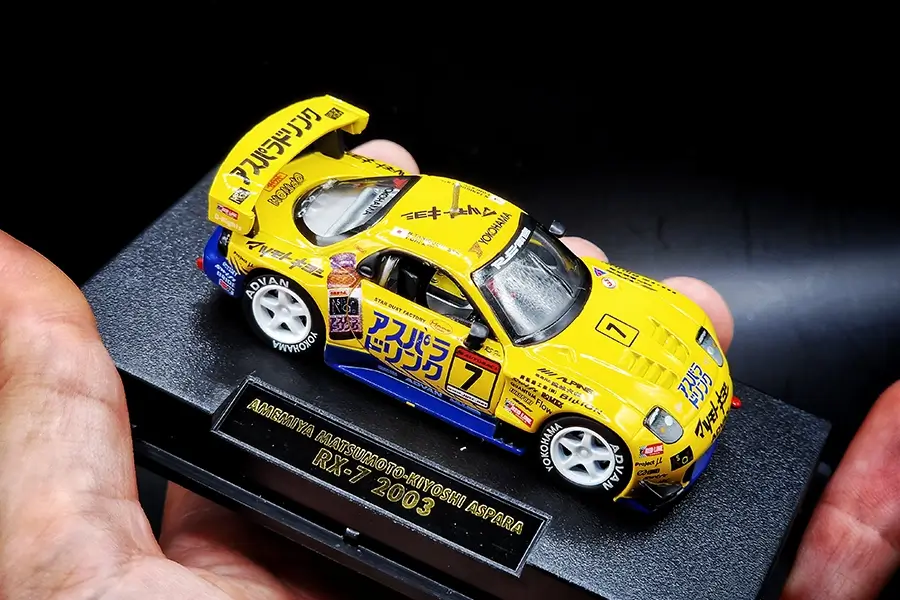
Tamiya had by far not produced all models and focussed only on Japanese car brands. As a result, the GT300 winner was not included. But in the GT500 class all the more so, as team NISMO snatched overall victory with their Nissan Skyline GTR R34 and held their own against Team Esso in the Toyota Supra. A total of 8 races were held, with the maximum number of points per race being 22 for the max. 20 points for a win, a further point for pole position in qualifying and one point for the fastest race lap.
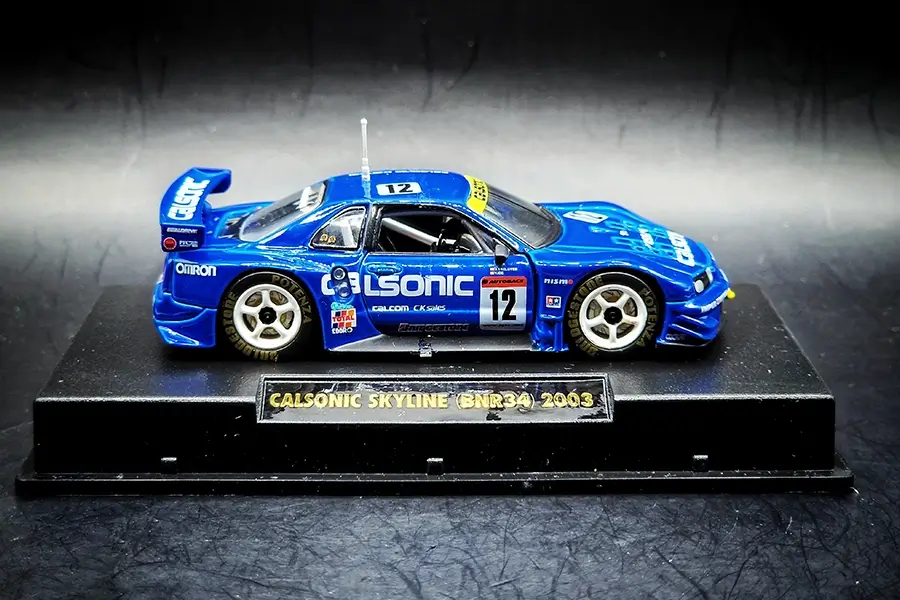
The Tamiya models are an absolute eye-catcher and are a must for JGTC fans. Our YouTube video takes a closer look at the models so be sure to tune in, video is linked at the bottom of the article. In any case, the models impress with a high level of detail, all relevant sponsors, rubber wheels (rolling), opening doors, a detailed interior and a practical display case. A negative point is that they are a little too big and bulky despite the 1/64th scale. In addition, the rubber bands ensure that the doors are held shut on the packaged models, but also cause abrasion to the paintwork. Within 21 years, the rubber band has left marks that can hardly be repaired.
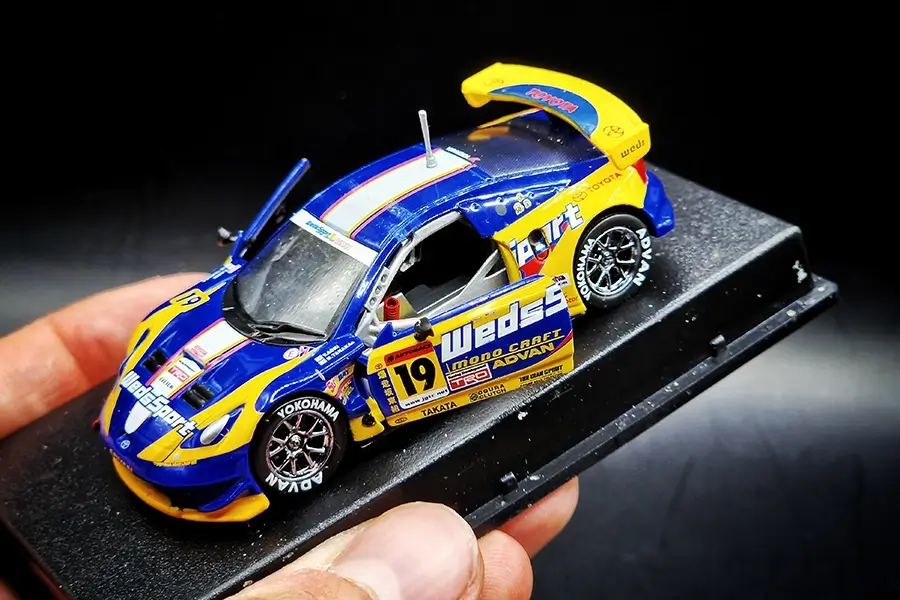
What do you think about the JGTC and the Tamiya models? Don't forget to watch our new video about it. You can find the video linked here:
You also have the unique chance to get your hands on the winner of the JGTC 2003 in our shop:


You May Also Like
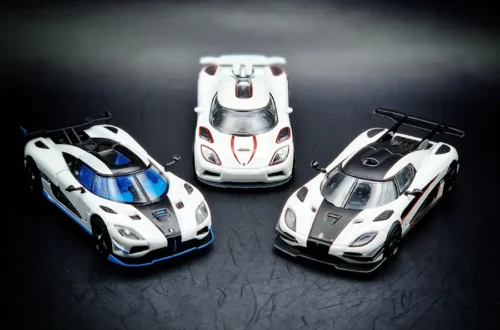
Koenigsegg Agera R, RS, ONE:1 – The King of Sweden FEATURETTE
March 30, 2023
CMS, MiniGT, Tarmacworks, Kyosho Lancia Delta – A Racing Myth FEATURETTE
February 10, 2023
